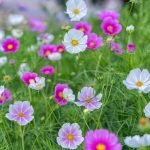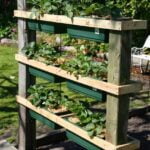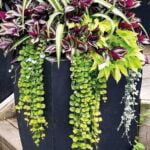Looking for interior landscape ideas to spruce up your indoor spaces? Indoor plants not only add a touch of green to your home but also have numerous benefits for air quality and overall well-being.
In this article, we will explore the concept of interior landscaping and its importance in designing indoor spaces, as well as the impact of indoor plants on air quality, mood, and productivity. Whether you’re a seasoned plant parent or just getting started, we’ll provide you with everything you need to know about bringing nature indoors.
The presence of indoor plants has been shown to have a positive impact on air quality, reducing stress levels, and increasing productivity. Studies have demonstrated that incorporating plants into indoor environments can significantly improve the overall well-being of occupants. From improving air quality by reducing harmful pollutants to enhancing mood and concentration, indoor plants offer a multitude of benefits that make them a valuable addition to any space.
In this article, we will delve into the various benefits of interior landscaping and explore the scientific evidence supporting these positive effects. Additionally, we will discuss different types of indoor plants suitable for varying light and temperature conditions, providing tips on caring for each plant. Whether you’re looking to create a lush jungle oasis or simply add some greenery to your home or office, there are endless possibilities when it comes to interior landscaping.
Benefits of Interior Landscaping
Interior landscaping not only brings aesthetic appeal to indoor spaces but also offers numerous benefits for the well-being of occupants. The presence of indoor plants has been linked to reduced stress levels, increased productivity, and improved mood. Scientific studies have shown that the act of nurturing and caring for plants can have a positive impact on mental health, making interior landscaping an essential aspect of holistic design.
The benefits of interior landscaping are not just anecdotal; there is scientific evidence to support the positive effects of indoor plants on human health and well-being. Research has shown that being around indoor plants can lower blood pressure, reduce anxiety, and even improve concentration and memory retention. In addition to these psychological benefits, indoor plants also help improve air quality by removing harmful toxins and releasing oxygen into the environment.
When it comes to choosing indoor plants for interior landscaping, there is a wide variety of options suitable for different light and temperature conditions. Some popular choices include snake plants, pothos, peace lilies, and spider plants. These plants not only add visual interest to a space but also require minimal maintenance, making them ideal for busy individuals. Watering schedules, soil types, and common pests should also be considered when selecting and maintaining indoor plants.
Overall, the benefits of interior landscaping extend far beyond just adding greenery to a room. With their ability to reduce stress, increase focus, and enhance overall well-being, indoor plants are essential elements in creating healthy and harmonious living spaces.
- Improved air quality
- Reduced stress levels
- Increased productivity
- Psychological benefits
- Physical health benefits
Types of Indoor Plants
Indoor plants are a wonderful addition to any interior space, providing not only aesthetic appeal but also a wide range of benefits for those who inhabit the space. When considering interior landscape ideas, it is important to explore the various types of indoor plants that are suitable for different light and temperature conditions. Whether you have a brightly lit room or a darker corner in need of some greenery, there are plants that can thrive in almost any environment.
One popular option for low-light conditions is the snake plant, also known as Sansevieria. This hardy plant is known for its ability to thrive in low light and withstand infrequent watering, making it an ideal choice for those with busy lifestyles. For spaces with moderate to bright light, pothos is a versatile and easy-to-care-for plant that can tolerate varying light conditions. Its trailing vines make it a great option for hanging planters or high shelves.
For those looking to add some floral beauty to their interior landscape, peace lilies are an excellent choice. These elegant plants produce striking white blooms and can thrive in medium to low light settings. When caring for indoor plants, it’s essential to consider their specific needs regarding water, sunlight, and humidity levels.
In choosing the right indoor plants for your space, it’s also important to consider factors such as pet safety, if you have furry friends at home. Some common houseplants can be toxic to pets if ingested, so be sure to research pet-friendly options if this applies to your household. Overall, incorporating indoor plants into your interior design scheme can breathe life into any space while contributing to improved air quality and overall well-being.
| Indoor Plant | Light Conditions |
|---|---|
| Snake Plant (Sansevieria) | Low Light |
| Pothos | Moderate to Bright Light |
| Peace Lily | Medium to Low Light |
Designing With Interior Landscaping
Incorporating interior landscaping into existing interior design schemes can greatly enhance the aesthetic appeal and overall ambiance of indoor spaces. Whether you are looking to create a focal point, add some greenery to a room, or simply integrate plants into your home, there are countless ideas to consider.
One idea is to use vertical planters, which not only add visual interest but also make efficient use of space. By creating a wall of cascading greenery, you can breathe life into any room while making a bold statement.
Another creative way to incorporate interior landscaping is by integrating plants into various rooms based on their unique characteristics. For example, you might consider adding air-purifying plants like snake plants and pothos in the bedroom to improve air quality and promote better sleep. In the living room, large floor plants or decorative plant stands can serve as focal points and conversation starters. The possibilities for incorporating indoor plants into your home are truly endless.
For those who are DIY-inclined, there are plenty of project ideas for creating unique plant displays within the home. From building your own terrariums to designing living walls using modular planters, there are numerous opportunities to get creative with interior landscaping. These DIY projects not only allow for personalization but also provide a sense of accomplishment and pride in caring for the greenery within your living space.
| Design Ideas | Description |
|---|---|
| Vertical Planters | Create a wall of cascading greenery for visual interest and efficient use of space. |
| Room-Specific Plants | Add air-purifying plants in the bedroom and decorative focal point plants in the living room. |
| DIY Projects | Create terrariums and modular planters for unique plant displays within the home. |
Indoor Plant Maintenance
Watering and Soil Care
One of the most important aspects of indoor plant maintenance is getting watering right. Overwatering or underwatering can both be detrimental to the health of your plants. It’s essential to research the specific watering requirements for each type of plant in your interior landscape. Additionally, using well-draining soil with appropriate nutrients can contribute to the overall health and growth of your indoor plants.
Pest Control and Disease Management
Another aspect of maintaining indoor plants involves keeping them free from pests and diseases. Inspecting your plants regularly for any signs of infestation or illness is key to preventing issues from spreading. Using natural pest control methods, such as neem oil or insecticidal soap, can help keep pests at bay without harming your plants or the environment.
Troubleshooting Common Problems
Sometimes, even with proper care, indoor plants may develop common issues such as yellowing leaves, drooping stems, or fungal infections. Being able to identify these problems early on and taking corrective actions is essential for maintaining the beauty and health of your interior landscape. Understanding the potential causes behind these issues, such as overwatering or insufficient light, can help in proactively addressing them before they escalate.
By giving proper attention to maintenance tasks like watering, pest control, and troubleshooting common problems, you can ensure that your interior landscape continues to flourish. With a little time and effort invested in caring for your indoor plants, you’ll be able to enjoy all the benefits they bring to your living spaces while creating a refreshing and inviting atmosphere.
Creative Planting Ideas
When it comes to interior landscaping, there are plenty of creative ways to display indoor plants that can enhance the overall aesthetic and ambiance of your living spaces. Whether you’re looking to add a touch of greenery to your home or office, here are some creative planting ideas to consider:
1. Terrariums: Creating a terrarium is a great way to showcase small plants in a glass container. These miniature ecosystems are low maintenance and can be customized with different types of plants, rocks, and other decorative elements.
2. Hanging Planters: Hanging planters are perfect for adding visual interest to any room while also saving space. Consider using macrame hangers for a bohemian look or opt for geometric planters for a more modern touch.
3. Living Walls: If you’re short on floor space, consider creating a living wall by installing vertical planters or wall-mounted shelves filled with cascading greenery. Living walls not only add a wow factor to any room but also help purify the air.
DIY Project Ideas:
By incorporating these creative planting ideas into your interior landscaping design, you can bring nature indoors in a visually appealing and unique way. Whether you’re an experienced gardener or just starting out, there are plenty of options to suit every style and space. Experiment with different combinations of plants, containers, and placement to create your own personalized interior oasis.
Interior Landscaping for Specific Spaces
Incorporating indoor plants into specific areas of the home can greatly enhance the overall ambiance and aesthetic appeal. Whether it’s the living room, bedroom, or home office, each space presents unique opportunities for interior landscaping. By carefully selecting plants that thrive in different environments within the home, you can create a more cohesive and inviting atmosphere.
Living Room
The living room is often the central gathering space in a home, making it an ideal location for incorporating interior landscaping. Large, statement plants such as fiddle leaf fig trees or tall rubber plants can serve as striking focal points in this area.
Additionally, smaller potted plants or succulents can be placed on coffee tables or shelves to add color and texture to the space. Consider arranging different types of plants at varying heights to create visual interest and balance within the room.
Bedroom
Introducing indoor plants into the bedroom can promote relaxation and improve air quality while adding a natural touch to the space. Low-light tolerant plants such as snake plants and peace lilies are perfect choices for bedrooms where natural light may be limited. Consider placing a small potted plant on a bedside table or incorporating hanging planters near windows to infuse greenery into the room without taking up valuable floor space.
Home Office
Incorporating interior landscaping into a home office can promote productivity and reduce stress levels. Choose low-maintenance plants like pothos or spider plants that thrive in indoor environments with artificial lighting. Consider creating a designated “plant corner” with a shelving unit filled with various potted plants or installing a vertical planter on an empty wall to maximize space while adding a touch of nature to your workspace.
By tailoring your approach to interior landscaping based on specific spaces within your home, you can effectively create harmonious environments that cater to both aesthetic appeal and practicality. As you consider which indoor plants are best suited for each area, keep in mind factors such as lighting conditions, humidity levels, and available space to ensure successful integration of interior landscape ideas throughout your living spaces.
Conclusion and Call to Action
In conclusion, interior landscaping offers numerous benefits for both the physical and emotional well-being of individuals, as well as enhancing the aesthetic appeal of indoor spaces. From reducing stress and increasing productivity to purifying air quality and improving mood, indoor plants have shown to have a positive impact on people’s lives. Additionally, incorporating interior plants into existing design schemes can create focal points, add color and texture, and bring a sense of nature indoors.
As more scientific evidence supports the positive effects of interior landscaping, it is essential to consider different types of indoor plants suitable for varying light and temperature conditions. From low-maintenance options like snake plants and pothos to flowering varieties like peace lilies, there are plenty of choices to suit any indoor environment. With proper care and maintenance, indoor plants can thrive and continue providing their numerous benefits.
Therefore, we encourage our readers to take action by incorporating more indoor plants into their living spaces. Whether it’s through creating focal points with vertical planters or integrating them into specific areas such as the living room or home office, there are endless possibilities for designing with interior landscaping.
By doing so, individuals can continue reaping the benefits of improved air quality, reduced stress, and enhanced aesthetics within their homes. For further information on interior landscape ideas and tips for maintenance, we recommend exploring additional resources available from experts in the field.
Frequently Asked Questions
What Is an Interior Landscape?
An interior landscape refers to the design and arrangement of plants, trees, and other greenery within indoor spaces such as offices, lobbies, and atriums. It is a way to bring elements of nature into built environments, providing aesthetic appeal and potential health benefits to occupants.
What Are the Elements of Landscape Design?
The elements of landscape design include various components that make up a well-designed outdoor space. These elements can include the use of plants, trees, shrubs, hardscapes like pathways or patios, water features such as fountains or ponds, and the overall layout and organization of the space.
What Are the 5 Basic Elements of Landscape Design?
The five basic elements of landscape design are line, form, texture, color, and scale. These elements are fundamental in creating a visually appealing and cohesive outdoor environment.
Lines help guide the eye through the space, forms provide structure and shape to plants and hardscapes, textures add depth and variety to the scenery, colors create visual interest and mood, and scale ensures that all elements work together harmoniously in terms of size and proportion.

Welcome to my gardening blog! I am passionate about plants and enjoy sharing my knowledge and experiences with others. In this blog, I will write about everything related to gardening, from tips on how to get started to updates on my own garden projects.





